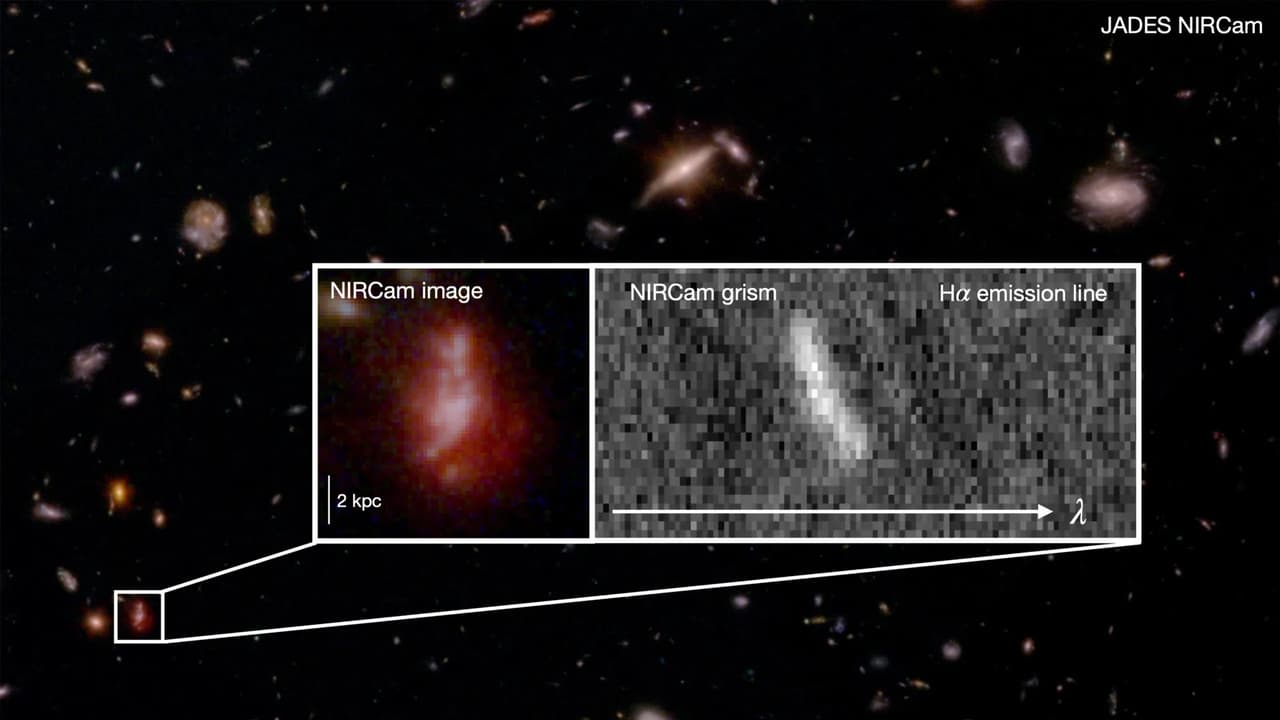JWST observations reveal that the universe’s first galaxies were chaotic, gas-rich systems, not orderly disks. Cambridge researchers found over 250 young galaxies swirling with turbulence, reshaping our understanding of early cosmic evolution.
Astronomers using the James Webb Space Telescope (JWST) have peered deep into cosmic history to uncover the turbulent origins of the first galaxies — and what they found is far from orderly. Instead of graceful spirals or structured disks, Webb’s powerful instruments reveal that early galaxies were chaotic, clumpy, and bursting with raw energy just a few hundred million years after the Big Bang.
A Universe in Turmoil
Led by researchers at the University of Cambridge, the study examined more than 250 young galaxies that existed when the universe was between 800 million and 1.5 billion years old. Using JWST’s NIRCam instrument in a specialized “grism mode,” the team captured light from ionised hydrogen gas to trace how the galaxies’ gas moved and evolved.
Their findings, published in Monthly Notices of the Royal Astronomical Society, show that most early galaxies were unstable and disordered, filled with thick clouds of gas and newborn stars swirling in multiple directions. Only a few showed hints of beginning to settle into rotating disk structures, similar to modern galaxies like the Milky Way.
“This is the first time we’ve been able to look at an entire population at once,” said Lola Danhaive, lead author from Cambridge’s Kavli Institute for Cosmology. “We found huge variation: some galaxies are starting to rotate in an ordered way, but most are still chaotic, with gas puffed up and moving in all directions.”
From Chaos to Cosmic Order
The research challenges earlier claims that massive, well-ordered disks formed early in cosmic history. Instead, it suggests galaxies gradually transitioned from chaotic beginnings to stable structures through mergers, starbursts, and turbulent gas flows.
“By looking at hundreds of smaller galaxies, we see a much clearer, theory-consistent picture,” said co-author Dr. Sandro Tacchella of Cambridge’s Cavendish Laboratory. “Early galaxies were messy and dynamic — growing through collisions and bursts of star formation.”
Bridging Cosmic Eras
These findings bridge the gap between the epoch of reionisation — when the first stars lit up the universe — and the later “cosmic noon,” the peak era of star formation. As JWST continues its deep surveys, astronomers hope to combine this data with studies of cold gas and dust to map how early galaxies matured into the majestic spirals we see today.
“This is just the beginning,” Tacchella said. “Webb is letting us witness galaxy formation in real time — from chaos to cosmic order.”
